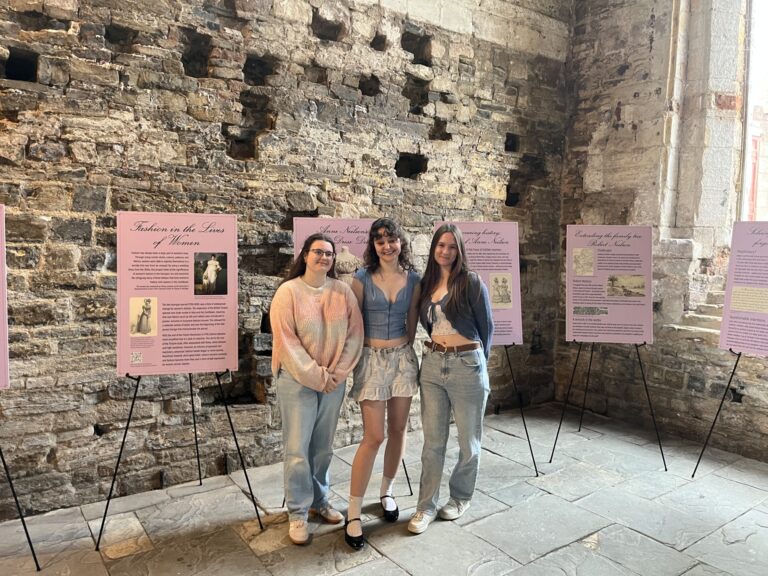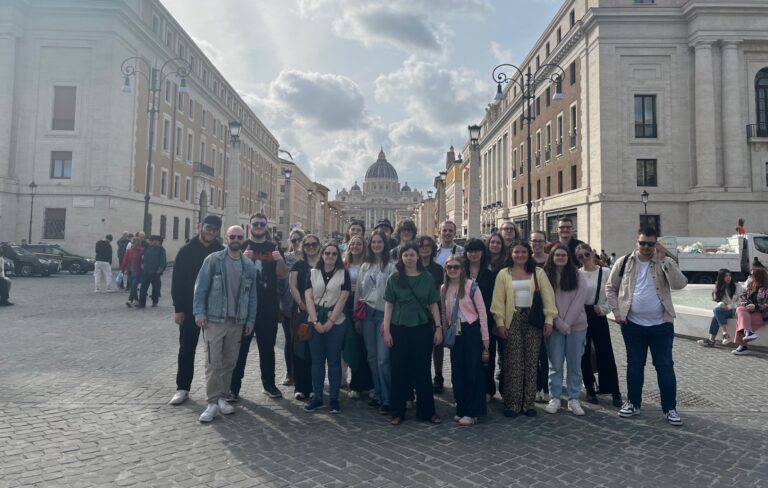| History
History Students at the Literature Festival – Hannah Rowland and Sophie Organ
Dame Fiona Reynolds, the National Trust and the English Literature Festival
Sophie and I were invited by Iain Robertson to attend a lecture by Dame Fiona Reynolds at the English Literature Festival. It is worth noting that Dame Fiona Reynolds has been the Director-General of the National Trust since 2001 and had volunteered for 15 years before that. We were provided with the golden opportunity to meet her before the lecture in which she gave us helpful tips in securing a position in an organisation like the National Trust. One message was clear; you have to be passionate and you need to become a part of the organisations through volunteering.
invited by Iain Robertson to attend a lecture by Dame Fiona Reynolds at the English Literature Festival. It is worth noting that Dame Fiona Reynolds has been the Director-General of the National Trust since 2001 and had volunteered for 15 years before that. We were provided with the golden opportunity to meet her before the lecture in which she gave us helpful tips in securing a position in an organisation like the National Trust. One message was clear; you have to be passionate and you need to become a part of the organisations through volunteering.
The lecture was opened up by looking at the roots of the National Trust as an organisation and where it all began. We were given a talk about Octavia Hill the founder of the National Trust and the aims which she set out to achieve. What was interesting is the vast amount of charity work that Octavia did for the Victorian orphans where she used to take them from the middle of London to the countryside for luncheon. But this is a very small part of what Octavia did for society. She feared the expansion of industry and the advances of modernisation, which is a very hot topic amongst historians at this current point in time. This threat of de-beautification is what drove her to set about preserving the world of the past. By collecting pockets of the past through the purchase of wild land, houses and gardens, Octavia was able to help keep the ‘beauty’ alive. She aimed to prevent people from living in slums across the country and to maintain the natural beauty of the world.
Through the legacy of Octavia Hill and her avid desire to preserve, we are left with some of the most fascinating places of beauty and time to visit and re-visit for as long as the National Trust is able to maintain them. The National Trust and all its investments are a historical goldmine of information that simply would have been lost if it wasn’t for Octavia Hill’s most prestigious work and ideology.
During her presentation, Dame Fiona Reynolds also mentioned a few of the properties and landscapes owned by the trust, including Octavia Hill’s first purchase ‘Paradise Place’. In amongst the selection shown to us were some of the expected houses – such as the grand Belton House and Tredegar House – but also some ‘quirky’ properties. The Birmingham ‘back-to-backs’ are the last remaining example of 19th century working people’s houses, and Mr Straw’s House is a ‘1920s house captured in time’ though slightly cosier than the mansions that are more commonly associated with the National Trust. As the Director-General explained, the National Trust also owned various landmarks and landscapes, ranging from over 700 miles of coast line through to half of mount Snowdon.
As the talk progressed, Dame Fiona Reynolds discussed the worrying figures that reflect the childhoods of today. It is now three times more frequent for a child to be injured falling out of bed than out of a tree. In an effort to combat this loss of traditional childhoods, the National Trust have released a list of ’50 things to do before turning 11 3/4 ‘. Dame Fiona Reynolds also discussed the issue surrounding bringing history and heritage into the modern day, and how the Trust is now incorporating an ‘Arms Open’ method of practice. This policy allowed visitors to be more engaged with the sites, as seen in the Hardy’s cottage in Dorset, where people can sit at the very desk where Thomas Hardy penned Far from the Madding Crowd and many more.
Building on from this, Dame Fiona Reynolds concluded with her thoughts and fears that history was slipping away from the younger generations, describing how some seem to know the larger events and key dates, but not the joining years in between or even the order in which the events took place. She offered the hope that through the National Trust sites and programmes, history would not be lost in the modern age.
We as historians feel strongly about the protection of our history and our heritage and this talk alone was enough to spark in us a desire to protect that which is our origins; for you should never forget where you came from because it makes us who we are today. Without our ancestors there would be no today, and the toil they went through to improve our world should never be forgotten. Traditions and methods are slowly disappearing and we should strive to keep them alive because they are what make us who we are.



